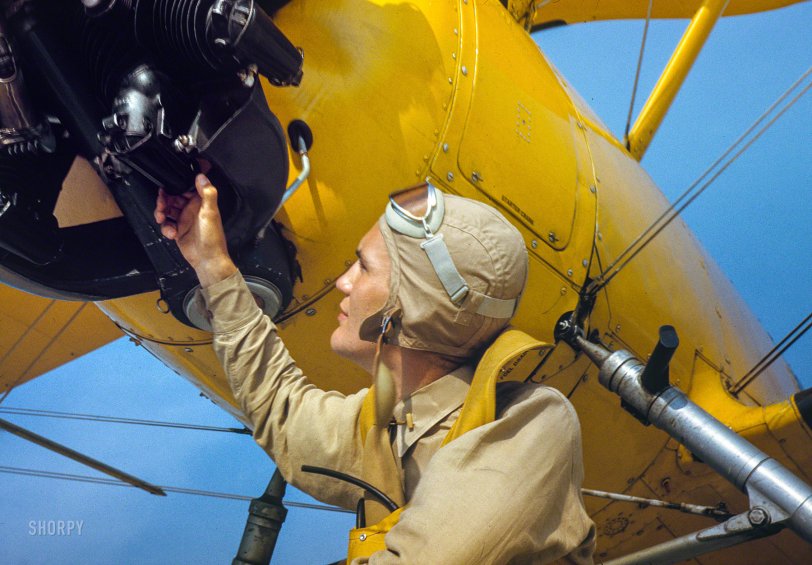


Framed or unframed, desk size to sofa size, printed by us in Arizona and Alabama since 2007. Explore now.
Shorpy is funded by you. Patreon contributors get an ad-free experience.
Learn more.

- Lofty addition
- In 1912
- Keenan Building
- Six years old
- Taken from the P.J. McArdle Roadway?
- It stood only 47 years
- Three track mind
- Incline to the right
- Reach for the sky, 1912 style
- No clean sweep
- Same Job Title, Same Face
- Sadly Lost
- Beautiful ...
- Where you get your kicks
- Aim High
- Pueblo Revival sisters
- Pueblo Neoclassicism
- Milk Man
- Regional dialect.
- Spielberg's inspiration
- Great Photo
- Loaf Story
- Do you still have the Rakes category?
- Could almost be a scene from the 1957 movie 'Hell Drivers'
- The Wages of Fear.
- Conspicuous by their absence
- Got Milk?
- All that aluminum
- No lefties
- Smoke 'em if you've got 'em
Print Emporium
Power of Tower: 1942

May 1942. "Marine lieutenant by the power towing plane for the gliders at Parris Island, South Carolina." 35mm Kodachrome transparency by Alfred Palmer for the Office of War Information. View full size.
Yellow Peril
The yellow was standard naval aviation color for a trainer plane. It was simply a conspicuous marking of a beginning pilot, to warn other pilots and ground crew not to necessarily expect normal or competent behavior!
Trainers were often referred to as "Yellow Perils." Tighten your seatbelt and helmet straps!
Combat gliders
Those were the helicopters of their day. And that must have been one of the most scary piloting jobs ever.
Landing an aircaft without propulsion, under enemy fire, in the dark, on unknwon (and next to invisible) terrain - sounds like a crash to everybody else. No second guesses (a.k.a. go-around), either. The US glider pilots had a "G" on their wings. And rightfully claimed "G is for guts".
There are two very good accounts, one by a Gerard M. Devlin (Silent Wings), and one by John L. Lowden (Silent Wings at War).
And the crazy things they did with medevac and bungees.
But all things considered recreational glider flying is much preferable.
Yellow Butyrate Dope
The yellow in this case is not zinc chromate primer. It's conventional yellow butyrate airplane dope. Zinc Chromate was used in some applications over aluminum to make the paint stick better by chemically interacting with the oxide layer that forms over bare aluminum. Dope doesn't stick to any non-porous material very well (except itself), so this was necessary to have it stick. It also reduces corrosion when exposed to salt water (which is relevant because the planes were delivered by ship - and corrosion damaged entire manufacturing runs of various airplanes). It's not a pure yellow, it's more greenish (as shown in the B-25 pictures).
This airplane had some area of aluminum, but a lot of it was covered with fabric (linen, probably) that needed to be painted with something to seal it up, hence, airplane dope. It would seal the material against moisture, and also shrink and draw the covering tight. Why they chose yellow, I don't know, but the standard paint scheme at the time was yellow and a medium-light blue. That is the yellow here, it's a Federal Standard paint color.
Popular color
Apparently that shade of yellow was very popular with the wartime suppliers. I have seen it multiple times on planes, jigs, and plant equipment. Wonder if there was some reason it was so widely used.
[It's a primer coat. -tterrace]
Kodachrome!
I love these Kodachromes! Please keep 'em coming. Great stuff.
Naval Aircraft Factory
Fairly sure this is an N3N primary trainer. Like many US biplanes from the interwar period, they were an attractive little machine.
























On Shorpy:
Today’s Top 5